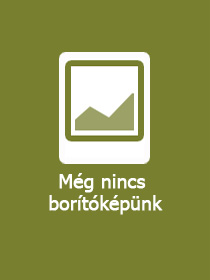
Analysing Users' Interactions with Khan Academy Repositories
-
20% KEDVEZMÉNY?
- A kedvezmény csak az 'Értesítés a kedvenc témákról' hírlevelünk címzettjeinek rendeléseire érvényes.
- Kiadói listaár EUR 139.09
-
59 001 Ft (56 192 Ft + 5% áfa)
Az ár azért becsült, mert a rendelés pillanatában nem lehet pontosan tudni, hogy a beérkezéskor milyen lesz a forint árfolyama az adott termék eredeti devizájához képest. Ha a forint romlana, kissé többet, ha javulna, kissé kevesebbet kell majd fizetnie.
- Kedvezmény(ek) 20% (cc. 11 800 Ft off)
- Discounted price 47 201 Ft (44 954 Ft + 5% áfa)
59 001 Ft

Beszerezhetőség
Becsült beszerzési idő: A Prosperónál jelenleg nincsen raktáron, de a kiadónál igen. Beszerzés kb. 3-5 hét..
A Prosperónál jelenleg nincsen raktáron.
Why don't you give exact delivery time?
A beszerzés időigényét az eddigi tapasztalatokra alapozva adjuk meg. Azért becsült, mert a terméket külföldről hozzuk be, így a kiadó kiszolgálásának pillanatnyi gyorsaságától is függ. A megadottnál gyorsabb és lassabb szállítás is elképzelhető, de mindent megteszünk, hogy Ön a lehető leghamarabb jusson hozzá a termékhez.
A termék adatai:
- Kiadás sorszáma 1st ed. 2021
- Kiadó Springer
- Megjelenés dátuma 2022. november 17.
- Kötetek száma 1 pieces, Book
- ISBN 9783030891688
- Kötéstípus Puhakötés
- Terjedelem88 oldal
- Méret 235x155 mm
- Súly 174 g
- Nyelv angol
- Illusztrációk 3 Illustrations, black & white; 23 Illustrations, color 455
Kategóriák
Rövid leírás:
This book addresses the need to explore user interaction with online learning repositories and the detection of emergent communities of users. This is done through investigating and mining the Khan Academy repository; a free, open access, popular online learning repository addressing a wide content scope. It includes large numbers of different learning objects such as instructional videos, articles, and exercises.
The authors conducted descriptive analysis to investigate the learning repository and its core features such as growth rate, popularity, and geographical distribution. The authors then analyzed this graph and explored the social network structure, studied two different community detection algorithms to identify the learning interactions communities emerged in Khan Academy then compared between their effectiveness. They then applied different SNA measures including modularity, density, clustering coefficients and different centrality measures to assess the users? behavior patterns and their presence.
By applying community detection techniques and social network analysis, the authors managed to identify learning communities in Khan Academy?s network. The size distribution of those communities found to follow the power-law distribution which is the case of many real-world networks.
Despite the popularity of online learning repositories and their wide use, the structure of the emerged learning communities and their social networks remain largely unexplored. This book could be considered initial insights that may help researchers and educators in better understanding online learning repositories, the learning process inside those repositories, and learner behavior.
TöbbHosszú leírás:
This book addresses the need to explore user interaction with online learning repositories and the detection of emergent communities of users. This is done through investigating and mining the Khan Academy repository; a free, open access, popular online learning repository addressing a wide content scope. It includes large numbers of different learning objects such as instructional videos, articles, and exercises.
The authors conducted descriptive analysis to investigate the learning repository and its core features such as growth rate, popularity, and geographical distribution. The authors then analyzed this graph and explored the social network structure, studied two different community detection algorithms to identify the learning interactions communities emerged in Khan Academy then compared between their effectiveness. They then applied different SNA measures including modularity, density, clustering coefficients and different centrality measures to assess the users? behavior patterns and their presence.
By applying community detection techniques and social network analysis, the authors managed to identify learning communities in Khan Academy?s network. The size distribution of those communities found to follow the power-law distribution which is the case of many real-world networks.
Despite the popularity of online learning repositories and their wide use, the structure of the emerged learning communities and their social networks remain largely unexplored. This book could be considered initial insights that may help researchers and educators in better understanding online learning repositories, the learning process inside those repositories, and learner behavior.
TöbbTartalomjegyzék:
1. Introduction to Online Learning Repositories.- 2. Research Objectives.- 3. Literature Review.- 4. Methodology.- 5. Data acquisition.- 6. Assessing Online Learning Repository with Descriptive Statistical Analysis.- 7. Detecting Communities in Online Learning Repository.- 8. SNA Measures and Users? Interactions.- 9. Conclusions.- 10. Future work.
Több

Analysing Users' Interactions with Khan Academy Repositories
Iratkozzon fel most és részesüljön kedvezőbb árainkból!
Feliratkozom
59 001 Ft



